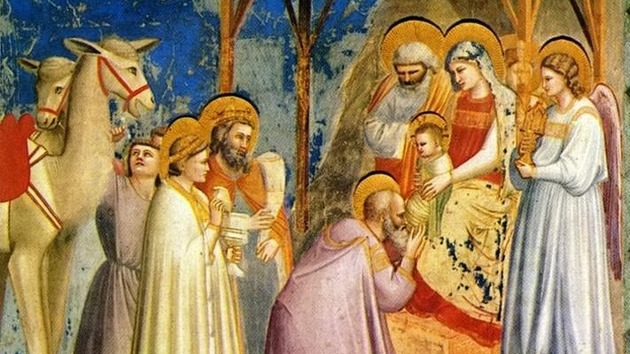Scholars who critically analyse the New Testament believe that the fragment about the Magi is midrashic in nature, that is, it has the value of catechetical instruction, not a chronicle account. This story is supposed to symbolise something. It is both a metaphor and an allegory.
How the Magi Became Kings
Around the 6th century, the first representations of three figures appear in Christian iconography. This is probably the result of a simple association – three gifts required three donors. The oldest commentaries claim that they came together from Persia. Then the idea emerged that they travelled from different parts of the then known world. Caspar was supposed to come from India, Melchior from Persia, while Balthazar from Arabia or Ethiopia. This is probably why the last one is sometimes depicted as black. In medieval art, crowns finally appear on their heads, and this way the Magi or Magicians were transformed into Kings.
Symbolism of the Epiphany
Each of these variants has its own symbolic meaning. The Epiphany, because that is the official name of the holiday celebrated on 6 January ("Three Kings" is the common name), is associated with theophany. In order to understand the sacredness that is revealed to man, one must – like the Magi – be guided by reason that does not reject faith. In turn, the Magi may symbolise the end of earlier cults (in the popular understanding, magic precedes religion). The bowing Magi underline the dominance of the emerging religion over previous beliefs. Finally, the presence of the Kings means the recognition of Jesus by the secular monarchy, which is reflected in the maxim that "all power comes from God". Additionally, the Kings here symbolise a broadly understood higher estate, complementing the group of those adoring Jesus in the stable. After all, there are already shepherds there, i.e. representatives of the common people in the good sense of the word – people who are naturally pious, modest, simple, trusting and sincere.
From the Adoration of the Magi according to Matthew to the first Nativity scenes
If we connect these threads, we will see a scene in which Jesus is adored by all classes, all peoples, followers of all (previous) religions, people both primitive and educated, poor and rich, old and young. All become witnesses of the Epiphany of the Lord. This is what the scene of the poor stable and the guests who arrived kneeling or bending over the manger in which the child lies is all about. Even the mysterious star and animals appeared in this place. The various variants of this representation should be interpreted as a whole as an allegory of a groundbreaking and important event for the whole world. This idea guided both St. Matthew the Evangelist, who described Christmas, and the Franciscans, who constructed the first nativity scenes in their monasteries in the Middle Ages.
Text: Dr Damian Kasprzyk, Ethnography and Folklore Research Lab, University of Lodz

